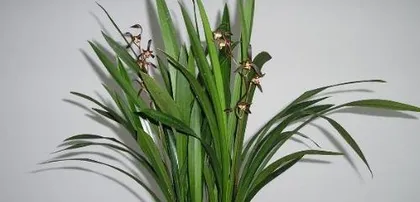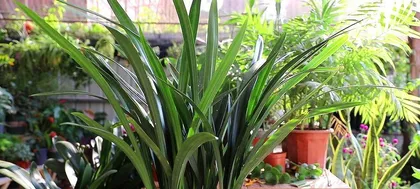Black Orchid is a beautiful plant that plays an important role in our lives. However, if we don't understand the growth environment and soil conditions of Black Orchids, it's easy to cause their death or poor growth. This article will explore the growing environment and required soil conditions for Black Orchids, as well as how to use suitable soil to cultivate them.

Introduction to Black Orchid
Black Orchid, also known as Agave, is a common ornamental leaf plant. It belongs to the Agavaceae family and is a perennial herbaceous plant. Its leaves display bright green color and have rather special flower shapes. In our daily life, Black Orchids are widely used for indoor and outdoor decoration and viewing purposes.
Growth Environment of Black Orchid
Black Orchid originates from South America, and its growth environment mainly concentrates in tropical and subtropical regions. In China, Black Orchids mainly grow in Guangdong, Guangxi, Fujian and other southern provinces. Black Orchids prefer sunny, warm, and humid environments, and are suitable for growth at temperatures between 20°C and 30°C.

Soil Conditions for Black Orchid
Black Orchids have relatively high requirements for soil, mainly needing fertile, well-drained, and aerated soil. Moreover, Black Orchids are not suitable for growth in acidic soil, so we need to choose slightly alkaline soil.
Exploring the Root System Structure of Black Orchid
The root system structure of Black Orchid is quite complex. Its main roots grow downward, penetrating deep into the soil to find sufficient water and nutrients. Moreover, the roots of Black Orchids usually appear flattened, which makes it easier for them to absorb nutrients.
Selecting Appropriate Pots and Soil
When planting Black Orchids, we need to select appropriate pots and soil. Generally, we can choose deeper pots to facilitate the extension of Black Orchid roots. Also, we need to pick soil that is well-aerated and well-drained to facilitate the growth of Black Orchids. Additionally, we can add appropriate organic fertilizer to provide nutrition for Black Orchids.

How to Water
Watering is a very critical step when cultivating Black Orchids. Usually, we can judge whether watering is needed based on the moisture content of the soil. Generally, when the surface layer of the soil is dry, appropriate watering is needed. However, we need to pay attention not to overwater to avoid making the soil too wet.
How to Control Temperature
Black Orchids are suitable for growth in relatively warm environments. In summer, we need to prevent excessive direct sunlight and high temperatures to avoid affecting the growth of Black Orchids. In winter, we need to keep them warm to avoid the impact of cold weather on Black Orchids.
How to Prune
The leaves of Black Orchids grow vigorously. During their growth process, we need to prune them in time. Generally, we need to cut off withered or overly long leaves to provide a more suitable growing environment for Black Orchids.
Pest and Disease Prevention
When cultivating Black Orchids, we need to pay attention to preventing pests and diseases. Generally, Black Orchids are prone to aphid infestation, so we can use appropriate pesticides to prevent it.
How to Repot
In the growth process of Black Orchids, sometimes we need to transfer them to new pots. Before transferring, we need to ensure that the roots of Black Orchids remain intact, and select appropriate new pots and soil for planting.
How to Care for Black Orchids in Winter
In winter, Black Orchids have higher requirements for temperature and humidity. We need to place them in a warm and well-ventilated environment, and maintain appropriate humidity to avoid winter death.
Propagation Methods of Black Orchid
Black Orchids mainly propagate through two methods: division and cutting. Among them, division involves separating the root parts of the original plant to reproduce new plants; cutting involves inserting branches of the original plant into the soil to produce new roots and plants.
How to Perform Regular Maintenance
When cultivating Black Orchids, we need to perform regular maintenance. Usually, we can fertilize, water, and prune Black Orchids every once in a while to ensure their good growth.
Precautions for Cultivating Black Orchids
When cultivating Black Orchids, we need to pay attention to the following points: avoid overwatering, pay attention to controlling temperature and humidity, timely remove withered leaves, and apply fertilizer appropriately, etc.
In conclusion, Black Orchids have relatively high requirements for soil and environment, so we need to select suitable pots and soil for planting. When cultivating Black Orchids, we need to pay attention to timely watering, controlling temperature and humidity, and timely pruning, etc., to ensure their good growth. Through the practice of the above methods, I believe you can also successfully cultivate a healthy and vigorous Black Orchid plant.
<|end_of_box|>